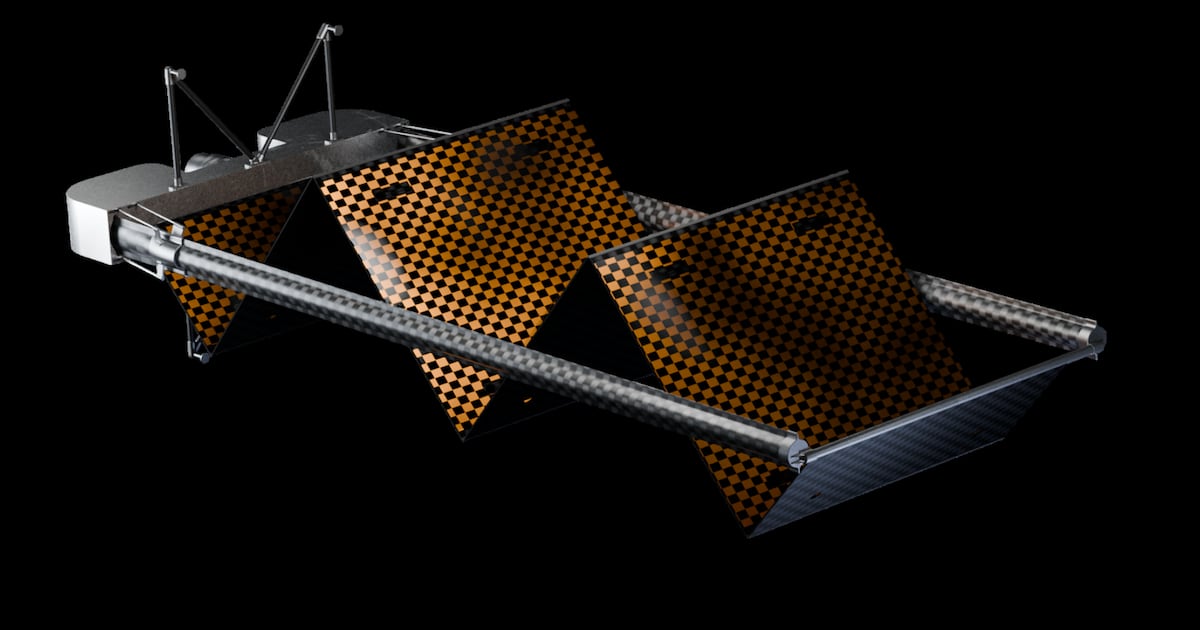The array is essentially like a solar panel on Earth, but instead of being a stiff fixture mounted on a roof or other structure, it is a series of flexible carbon fiber panels attached to a tube that can furl and unfurl like a party noisemaker. The panels fold like an accordion when not deployed.
Credit: Handout
Credit: Handout
The Light Wing’s seemingly simple mechanics belie its role powering technology of the future. One of Atomic-6’s clients plans to put the array on a satellite data center slated to launch into space in early 2027. The startup is also working to get a 150-foot-tall Light Wing array on the moon’s south pole that could help power mining missions or human habitation, Smith said.
But before that can happen, the Light Wing has to go through flight qualification, which essentially puts the technology through tests here on Earth to mimic what it will go through mounted on a rocket, hurtling through extreme temperatures or operating in the vacuum of space, according to Smith. The testing takes, on average, 12 to 18 months, he said.

Credit: Handout
Credit: Handout
In all, Smith said Atomic-6 has received more than $12 million in research contracts from the Department of Defense for Light Wing and its other product, a type of armor for spacecraft. It can protect against small debris traveling at Mach 21 — that’s 21 times the speed of sound, or the speed to get from Atlanta to Los Angeles in under 10 minutes.
In addition to the funding, Atomic-6 announced Chris Hadfield, the retired Canadian astronaut and former commander of the International Space Station, who went viral for singing and playing guitar while aboard the spacecraft, has joined the company’s advisory board.
